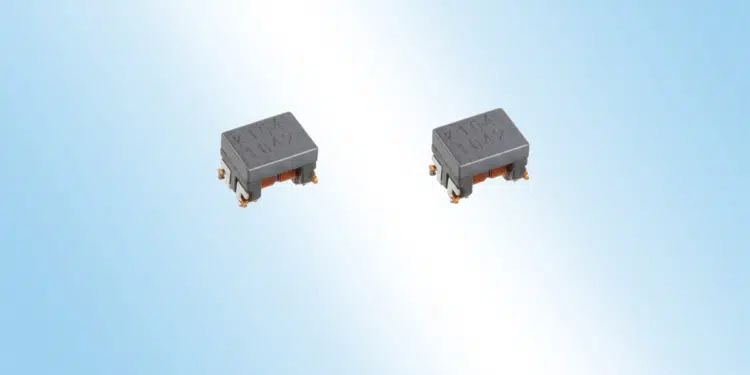TDK Corporation announces the development of its new ACT1210D Series common-mode choke for automotive CAN-FD, which begin mass production in April 2021.
Automotive LANs are roughly categorized into 4 systems such as body, safety, powertrain and multimedia/information and telecommunications. This product supporting CAN and CAN-FD enables a fivefold data transmission speed of 5 Mbps. Currently, CAN is the most widely used standard for body and other systems, keeping a maximum data transmission speed of 1 Mbps.
While meeting the demands of CiA and IEC standards, the ACT1210D Series common-mode choke also boasts a compact low-profile body (3.2 (L) x 2.5 (W) x 2.5 mm (H)) and noise suppression capabilities. Its unique structural design provides signal mode transfer characteristics (Ssd21) that increase communication quality. The manufacturing process involves a highly automated and extremely precise winder and a wire connection method using the laser welding of metal terminals to achieve high reliability.
Over recent years, demand for the handling of high-speed, large-capacity camera footages in ADAS has increased. TDK offers a wide range of automotive communication products and a 1000BASE-T1 Ethernet standard lineup to deliver optimal performance for these applications. Moving forward, TDK will continue catering to customers’ needs by providing comprehensive product services for common-mode chokes for automotive communication.
Glossary
- LAN: Local Area Network, a private communication network.
- CAN: Controller Area Network, one of the communication protocols for automotive LANs.
- CiA: CAN in Automation, an industry organization of automotive and electronic component manufacturers.
- IEC: International Electrotechnical Commission, an international standards organization for all electrical, electronic and related technologies.
Main applications
- CAN, CAN-FD systems
Main features and benefits
- Implements great signal mode transfer characteristics, increasing communication quality
- A compact, low-profile size of 3.2 (L) x 2.5 (W) x 2.5 mm (H) to facilitate space savings
- Wide temperature range from -40°C to + 150°C, contributing to environmentally-resistant design
Key data
| Type | Common-mode Inductance [μH] @100 KHz, 100 mV | DC resistance [Ω] max. | Insulation resistance [MΩ] min. | Rated current [mA] min. | Rated voltage [V] max. |
|---|---|---|---|---|---|
| ACT1210D-101-2P | 100 ± +50%/-30% | 3 | 10 | 115 | 80 |
































